Autonomy
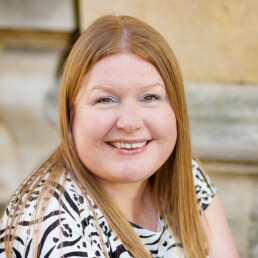
Hannah Wilson
noun. the right or condition of self-government; (in Kantian moral philosophy) the capacity of an agent to act in accordance with objective morality rather than under the influence of desires.
In developmental psychology and moral, political, and bioethical philosophy, autonomy is the capacity to make an informed, uncoerced decision. Autonomous organisations or institutions are independent or self-governing.
I thrive in cultures which enable autonomy. I love being autonomous.
When I reflect on my roles over time I realise that my job satisfaction, my sense of fulfilment and my wellbeing were deeplf affected by how autonomous I could be in each role, in each organisation, in each context.
As an Assistant Principal, my Principal trusted me, he empowered me to be autonomous and I thrive. As a Vice Principal, my new Principal controlled us, he micro-managed me so we were disempowered. As a Headteacher I was initially quite autonomous, and then the Trust became more and more controlling, each line manager tried to rein me/ us in (also all men).
The tensions between my line manage, my employer and I have all stemmed back to my autonomy being restricted or removed. I wonder if perhaps my frustration also links back to the patriarchal power structures at play.
Our ability to be autonomous comes from our ability, our experience, our capacity, our confidence along with how we are trusted and how we are held to account. Our ability to enable and empower others to be autonomous relies on our trust and faith in them.
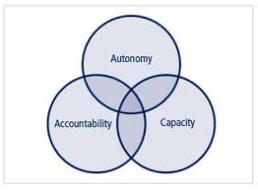
For me, autonomy is rooted in independence. It is fuelled by the need for freedom. It is framed through integrity.
Our schools do not enable and empower teachers and leaders to be autonomous. Our system conditions us to be compliant. Our society trains us to follow rules, to not be disruptive or rebellious.
Do we fear autonomy? Are we afraid of losing control?
“The 3 things that motivate creative people: autonomy, mastery and purpose”.
Daniel H.Pink
We go into teaching as our purpose, we deepen our understanding and polish our craft to become masters, as creative beings it is the autonomy or lack of that drives us out.
“Autonomy is different from independence. It means acting with choice”.
Daniel H. Pink
We enable and empower others, the children we serve, the teams we lead to be independent and to make choices. Being autonomous is also about owning those choices and the consequences that arise.
“Control leads to compliance: autonomy leads to engagement”.
Daniel H. Pink
We seek to self-manage and to self-regulate, we strive to enable others to do the same. When we relinquish control, when we release the need for compliance, autonomy increases and engagement thrives.
“Alignment enables autonomy”.
Henrik Kniberg
After 18 years of working in the system, I have taken the leap of faith to work independently. I am now truly autonomous. My purpose, my passion and my gifts are in alignment as my intentions, my practice and my autonomy are brought to life – they are working in synergy with one another.
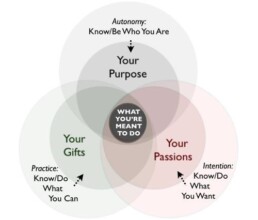
I know who I am, I know what I want to do and I know what I can do. I know that I am doing what I am mean to do because I am happy, content, stress-free. I feel purposeful, passionate and fulfilled.
What I didn’t realise when I made that leap of faith was that I had already wings – I had built them over time. As I jumped from the cliff and left security, stability and safety behind me, my wings have enabled me to transform into the autonomous being I have also needed to be. I make informed uncoerced decisions, I am independent and self-governing. I am empowered in my autonomy.

Choices

Hannah Wilson
noun. an act of choosing between two or more possibilities.
Following my 3 day weekend being trained to coach my clients for Fulfillment in early January, we spent another intense 3 days exploring how to coach for Balance. This is where the theme of Choices emerged from.
A lot of people say they want more balance in their lives. What we usually want is to feel that we are choosing our lives, not just reacting to them. Balance coaching is a way to guide people into making powerful life choices and actively manifesting the experiences they want most. Balance coaching makes us active participants in how we experience our lives.
Balance coaching is thus designed to create flow, restore alignment, and regain control of life. When conversations focus on what we have control over and what choices are possible, we help people gain new perspectives. This training weekend gave us the tools to empower our clients to define and pursue the experiences they want most, resulting in action that is alive, effective, and empowered.
Some of the coaching tools we developed and experimented with included: making resonant choices, building new perspectives, forwarding the action, being in flow, creating self-affirmations.
Ultimately, we are our choices. Below are a few of the quotes that remind me this:
“Life is a matter of choices, and every choice you make makes you”.
John Maxwell
“No matter what the situation, remind yourself, ‘ I have a choice’ “.
Deepak Chopra
“The 3 Cs of life: Choices, Chances and Changes. You must make a choice to take a chance or your life will never change”.
Zig Ziglar
As we unpacked the power of choice I began to make links between my CTI coaching training and some coaching training I had completed a few years ago, when I first left headship and transitioned into working independently, to become a Resilient Leaders Element consultant coach.
The RLE coaching framework which the Co-Founders Dr Jeremy Mead and Rachel McGill have co-created and shaped over a decade of people development really resonated with me when my friend Julie Rees introduced me to it. The self-assessment you do before you start your coaching relationship gives you a visual representation of how you see yourself across the 4 elements (Clarity of Direction, Awareness, Leadership Presence and Resilient Decision-Making) which are each underpinned by 3 facets. Later in the journey you also seek peer feedback and you can then compare how you see yourself to how you are seen by others.
In RLE resilient decision-making is broken down into our ability to make different decisions, in different ways, at different times:
- Creative decision-making – the ability to work outside of the usual frame of reference and take a valuable idea from concept to reality.
- Robust decision-making – combining intellectual rigour, evaluation and awareness, giving solid foundations and contingency planning.
- Versatile decision-making – creating options, responding to the needs and urgency of the situation, thinking and operating at the appropriate level.
The Impact
“Great decisions are made at the right time, with the right people, in the right place. Contingency options are always available so that the unexpected can be dealt with effectively and confidently”.
Completing my RLE accreditation during lockdown and at such a pivotal transition point in both my career and in my life, helped me anchor who I am and what I do, but it also helped me to forward the action as it gave me a framework to apply to myself and my emerging business:
- I had to be creative in my decision-making as I had to unlearn how institutionalised I was after 20 years of working in the system, I was also creating a new business from scratch and going through a rebranding process as a Leadership Development Consultant, Coach and Trainer.
- I had to be robust in my decision-making as I needed to make a living. It is scary going from financial security and job stability, when you venture into the unknown. I made the decision to take in a lodger for 6 months, just in case I did not make enough in my first few months to cover my mortgage.
- I had to be versatile in my decision-making as we unexpectedly found ourselves in a global pandemic and were thrown into working remotely. For many of my peers this was a major challenge as they had to flip their offer into a virtual one, I started my business at this time so embraced this new way of working and established it as the norm.
I spent a focused 6 months building my business and crafting my training and coaching offer for my network. I didn’t expect, nor intend, to be repeating this process 6 months later. But in the wake of George Floyd’s murder and the social justice activism my network made requests of me around formalising Diverse Educators and increasing our support/ training offer for schools.
My creative decision-making kicked in as we created a second website, my versatile decision-making was activated as I flexed my offer, and my robust decision-making grounded me as I sought partners to fund some of this collective project as I had invested what savings I had in the earlier process. So I made a choice to have two websites, two newsletters and two sides to my offer.
Although my work in leadership, coaching and training is clearly aligned and crosses over to the diversity, equity and inclusion community I am growing, I needed to separate the individual versus the collective offer.
Throughout this career and life transition, I was coached and supported by those around me. We regularly talked out the power of saying Yes and the power of saying No. I reflected on who and what I was saying Yes and No to as I realigned my purpose and streamlined my passion into working independently. This quote by Paulo Coelho is one of my favourites and one I regularly use in coaching and training sessions.
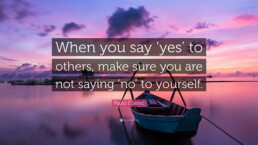
I use it whenever I fall into the dilemma of wanting to choose to say Yes to every opportunity that comes to me as so much is resonant and vision/ mission/ values-aligned, but I need to remind myself that each choice is active and each time I say Yes to someone else I am saying No to myself. I need to consistently make choices about Who I Am, alongside the What I Do.
Empowerment

Hannah Wilson
noun. authority or power given to someone to do something; the process of becoming stronger and more confident, especially in controlling one’s life and claiming one’s rights.
To empower. To be self-empowered. To empower others.
Your Strength
For me self-empowerment is rooted in our inner strength. The strength we have at our core – our inner reserves of resilience propel us forwards.
Being self-empowered is also about being self-sufficient and having self-efficacy.
It is self-empowering to face challenges head on, to rise to the challenge.
“A strong woman looks a challenge in the eye and gives it a wink”.
Gina Carey
It is also self-empowering to reflect on everything we have overcome. Our journeys, our struggles make us stronger.
I feel self-empowered when I reflect on the battles I have won, the obstacles I have navigated and the barriers I have climbed over.
“There is nothing stronger than a broken woman who has rebuilt herself”.
Hannah Gadsby
Self-empowerment is also about our abilities to rebuild ourselves when things go wrong.
There is no such thing as winning and losing. Failure is not a choice.
Mistakes makes us stronger and are opportunities to learn and grow.
Your Confidence
Self-empowerment is fuelled by our confidence.
Confidence in our own abilities, confidence in ourselves means that we hold onto our power and we do not give it away.
It is an act of self-empowerment to be ourselves, to be authentic.
It is self-empowering to know our own worth, to acknowledge the impact we have, to appreciate the value we add.
“Noone can make your feel inferior without your consent”.
Eleanor Roosevelt
Small things can make a big difference to how self-empowered we feel.
Saying No is an act of self-empowerment.
Saying ‘Thank you for waiting for me’ instead of ‘Sorry I was late’ is a self-empowering reframe.
Saying who we are with pride, rather than the self-deprecating “I am just a…” expands us rather than diminishes us.
Accepting compliments and basking in praise, empowers us to be seen and to be honoured.
Your Courage
Being yourself is an act of courage. Being yourself is about owning your own power.
To reach the courage to be our full selves, we need to overcome the fear of being judged and of being criticised.
I was once told to reframe criticism as praise and this helped me to be self-empowered from the feedback.
When we are driven by the conviction of our values, when we are purposeful in our pursuit of our mission, when we are bringing our vision to life, the fear soon dissipates.
“You must never be fearful of what you are doing when it is right”.
Rosa Parks
Conviction in who we are, in what we do, in why we do it, reminds us, strengthens us and empowers us.
Self-empowerment becomes intuitive and instinctive when we listen to our gut.
A daily mantra, affirming who we are at our best sets us up for the day:
“You are braver than you believe, stronger than you seem, smarter than you think”.
Repeating our intent, out loud to ourselves in the shower, or whilst looking at ourselves in the mirror will deepen our sense of self-empowerment.
Reminding ourselves who we are, what we stand for, what we bring, whilst standing in the power pose will also turbo charge our sense of self-empowerment.
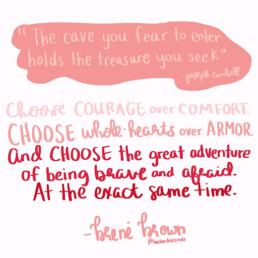
Your Narrative
Being self-empowered also means owning our stories.
We need to take control of our own narratives. If we do not do this then someone else will!
Life will throw stuff at us to test us. Each challenge will wound us, but it is our choice how long we let that pain linger for.
It is our choice if we let each challenge stop us, slow us down, or of we use it to empower us to carry on.
“She overcame everything that was meant to destroy her”.
Our scars tell the story of the battles we have fought to get to where we are.
Self-empowerment is sharing the journey as well as the destination.
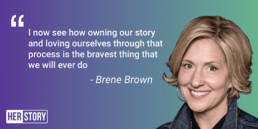
Your Tribe
I am self-empowered but I am also empowered by others.
I have a team of supporters, champions and cheerleaders who hold me high.
Our network gives us strength.
“Behind every successful woman is a tribe of other successful women, who have her back”.
Our tribe hold the mirror up to remind us who we are.
Our tribe shine a light on us to amplify our achievements.
Our tribe celebrates our wins and our learning points.
Our tribe stands with us and gives us that leg up or that helping hand when we need it.
“We rise and shine by lifting others”.
Self-empowerment walks along side empowerment.
Empowering others is as rewarding as empowering ourselves.
Be the girl, be the woman, who gives others a hand.
Mentor, coach and sponsor.
Build others up, don’t break them down.
“Girls compete, women empower”.
I have worked with people who have seen competition as a threat and it has brought out the worst in them.
Competition makes us better, there is room for us all to flourish, for us all to rise.
Your Life
Life is too short to wait.
Take opportunities as they come to you – say Yes and work it out later.
Do what feels right and seek forgiveness after, rather than permission before.
“The question isn’t who is going to let me: it’s who is going to stop me”.
Ayn Rand
Be empowered to be yourself.
“A girl should be two things: who and what she wants”.
Coco Chanel
Empower others to be themselves too.
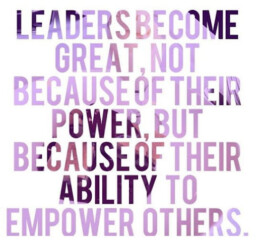
This Is How We Look When We Lead

Hannah Wilson
I have always been tall. Well above average in height shall we say. I come from ‘good stock’ it has often been said by family friends who are farmers – Dad is 6ft 1 and my Mum’s aunt is also 6ft too, so we have height on both sides of the family. But I am not just tall for a human – I am really tall for a woman. I tower over my female friends and some of my male friends too.
I can remember having friends who were taller than me at primary school and in Key Stage 3. I think I stopped growing around Year 9. My body hit pause, I was tall, but not exceptionally tall at this stage. Then something happened in Year 10. I shot up a few more inches. I became huge. A giant.
Being 6ft 1 when you are 14/15 and growing up in the 1990s in North Devon was hard when it came to clothes. I can remember the pain of clothes shopping as a teenager.
My younger sister, by 18 months, is a couple of inches shorter than me, and we have very different body shapes. I have always been curvy, carried a few extra pounds and am all leg (36 inches is my inside leg measurement!) whereas Pip is sportier in her physique and has a long back/ shorter legs. It meant that sharing clothes couldn’t really happen either. Saturday shopping trips for jeans or black trousers would often lead to arguments and tears.
My Mum is above average height at 5ft6 but she looks like a midget standing next to Dad, my sister and I. We often get comments when we are all together about how she gave birth to such giants. The human body is an amazing thing! My sister married someone taller than Dad so her family are all very leggy too and her teenager kids will soon tower over all of us. We definitely make an impact when we are all together, as you can’t really miss us as a family unit!
My height has helped me in my sports teams, I played netball, hockey and tennis for various teams at school, college, locally and then for university, often playing up a year due to my physical size. No, I don’t play basketball – a question I get asked a lot… So, my relationship with my height has been very much part of my relationship with myself, my friends, my partners and my career. After all I don’t know any different, there are some characteristics about our identity which we cannot change and whilst my weight has fluctuated, my hair colour has changed and my dress sense has evolved, my height has been a constant!
But how has my height shaped me as a leader?
I think I have probably taken my height for granted in many ways. Physically I know that I am very present. I am always visible – you can’t really hide when you are this height! I trained in tricky single sex boys’ schools and have always handled myself in busy corridors, playgrounds and have been known to separate many a fight. To be fair I just need to stand up as one of my behaviour management strategies. I know I have not had to work as hard as some of my smaller peers to establish myself, although I have also seen very tall men who are gentle giants who I have had to train and coach to be more present physically, to own their space so it is not always a given that if you are taller behaviour management is easier.
I was promoted early on in my career to Head of Year and I then became a Pastoral Middle Leader (the only female). I moved quickly onto SLT (I have served as the sole female on several male heavy leadership teams). I know my physique and my height, along with my loud voice and my confidence, have empowered me to hold my own. They have been an advantage in my career and perhaps, on reflection, I have experienced less bias than my petiter female friends, as a consequence. I think sometimes my male colleagues forget I am a woman in fact, as I can hold my own with the banter and handle myself with the jostling.
Being tall, leads to different choices about dress code too. I own heels, but I don’t need to wear heels. I used to wear them, and as my corridor stomp is well-known – colleagues and children would hear me before they could see me! But as I have been promoted, my work uniform has evolved and usually consists of a smartish dress with flat daps/ ballet shoes so I don’t suffer with sore feet, and so I can run around schools all day – as a school leader I was usually seen chasing a runaway down a corridor or up a stair case! When I worked under men who were shorter than me, I consciously wore flat shoes so as not to overpower them. They didn’t know this, but it was out of respect as I knew they had an invisible chip on their shoulders about their height. However, if they pissed me off, the next day I would come in wearing heels as symbolic gesture! I can remember at my second school I had a friend who had the same stature as me, our Headteacher was a small irritating man. The two of us were a tag team and would walk a corridor either side of him, hemming him in, if we needed to challenge anything.
So, my height has served me well as a leader, it has empowered me to be visible, to be present and to manage behaviour. Moreover, it has enabled me to hold my own as a woman in a male heavy space. Being tall has served my professional life well as it makes teaching and leading easier, whereas in my personal life it has been more problematic, but that’s a different story!
Some days I do feel like Gulliver in Lilliput. Travelling to Singapore in my 20s with a university friend, I felt like I was in a circus freak show. And, really, I should be rich for the number of times I have been asked “what’s the weather like up there?” Most of the time I can laugh it off, and after a few drinks in a bar if I get a “big lass” comment they usually get a retort along the lines of “rude git”. It is in those moments where you catch your reflection when you are standing next to a smaller colleague or you see a group picture and you are towering above everyone else that remind you that you stand out. It could make me self-conscious, and perhaps it did when I was younger, but I have worked through that and accepted myself for who I am.
I would say that my relationship with my weight has been less positive. Being tall and carrying weight is a double whammy. At school as a child I was bullied by a group of bitchy girls who called me BFG (“Big F***ing Ginger”) and the worse thing I have been called by a kid is a “Fat Bitch”. Although I think my retort at the time was: “whilst I might be fat, I am far from a bitch!” It has taken me longer to find peace with my body shape, my curves, and my weight. I don’t think my weight has impacted my leadership though. It is just who I am, I am comfortable in my skin and I have a strong sense of self. As a teacher and as a leader I have supported a lot of students struggling with their self-identity and their body image. I know I was lucky to have a strong family support network, so my self-esteem and self-confidence have always been high.
As for my hair colour, we were ginger when we were growing up, so my sister and I were on the receiving end of all of the schoolyard taunts. My sister fared it worse than me as she has curly hair too. The jibes cut her a lot deeper than they did me. I have always had thicker skin than her, and in defending her, I learnt to accept myself, I think.
When I went to university, I started to dye my hair and lost the ginger hues, and as I have aged, my hair has become naturally darker. Women don’t tend to comment on other women’s hair colour but some of the male leaders I have worked with, especially those who were threatened by me, did make comments about me being a feisty redhead, so I guess I have had to navigate some of the stereotypes that come with that too. I can remember watching an episode of Graham Norton and he had a couch of stunning redheads on it, and Julianne Moore shared her fascination with the British slurs for being a ‘ginga’ whereas in the US redheads are seen as being exotic. An interesting change in lens on what we value about differences in how we look.
Personal identity is interwoven with professional identity. Our leadership self is a fusion of how we look and how we behave, with what we know and what we create. Being myself, being authentic – being a tall, curvy, ginger – is who I am. I accept that, I own that, I am proud of that.
Authenticity

Hannah Wilson
Authenticity is about presence, living in the moment with conviction and confidence and staying true to yourself. Authentic is defined as: “not false or copied; genuine; real” and can also be described as “representing one’s true nature or beliefs; true to oneself or to the person identified.”
Authenticity is something I think, talk, read and listen about a lot. It is a word I mull over and explore. I have blogged about it, spoken about it at events and built it into training I have designed and led.
I don’t know what my parents put in my porridge when I was growing up but since I was a teen I have been stubbornly authentic. I describe myself as Marmite, I don’t evoke neutral responses, you either love me or you hate me, and I am fine with that.
There is a distinction between being liked and being respected at work, I care about being respected for my personal and professional integrity, I don’t need to be liked by others for my own sense of self-worth as I like myself. I am self-assured about my own worth. I self-validate who I am.
I am conscious that others do not have the self-confidence and high self-esteem that I have and that they want to work on it and nurture it. I am also acutely self-aware that confidence can be interpreted as arrogance if it becomes too amplified. It is a fine balancing act between being confident, being humble and being true to yourself.
A thought leader you cannot avoid when you are reading about what it means to live an authentic life and what it means to be your authentic self is the brilliant Brene Brown:
“To be authentic, we must cultivate the courage to be imperfect – and vulnerable. We have to believe that we are fundamentally worth of love and acceptance, just as we are. I’ve learned that there is no better way to invite grace, gratitude and joy into our lives than by mindfully practising authenticity”.
Brene Brown
This quote is so rich and dense with our values I am going to unpack each one she mentions, ironically we have already explored a lot of them as part of our #DailyWritingChallenge values journey over the last 7 weeks as we use the social isolation time to look inwards:
- Courage: being yourself means digging deep and revealing the real you, your whole self and not being a chameleon who transforms into the person other people want or expect to see.
- Perfection: once we recognise and accept that we are all flawed, we can stop comparing ourselves and we can manage our inner critic, slowly turning the volume down on the negative self-talk.
- Vulnerability: removing the mask, exposing our hearts and souls, lets others see the real us, our core, this can feel scary but it is also very empowering.
- Self-belief: our confidence is worn on the outside, our self-esteem is how we feel on the inside, we need to have the conviction to believe in our skills, qualities and strengths, we need to know the value that we can bring.
- Self-love: we all want to be loved, but we need to first seek that love from within, rather from outside, if you love yourself, including the imperfections, then the wall comes down to welcome others to do the same.
- Acceptance: the word tolerance is used a lot these days, but no-one wants to be tolerated, as there is a sense of people having to put up with something or someone, we all seek a sense of belonging, we all want to be seen and heard, we all need to be accepted.
- Grace: this is the one I grapple with in this context, I don’t see myself as being physically graceful, I think this is because I am tall/ big, and have always been teased for being clumsy, but my actions and attitude can be graceful, I can honour myself and others.
- Gratitude: we have lots to be grateful for and we can often forget this, we can appreciate the external things, the material goods, but we also need to practise being grateful for the things that are intangible, the qualities we have nurtured over time, the the things that make us unique.
- Joy: our personal fulfilment, our sense of satisfaction and our joy in being alive, in being ourselves, is amplified when we are comfortable in our own skin and we surround ourselves with people who celebrate our authentic selves.
- Mindfulness: being mindful is another quality I am nurturing, I am empathetic and compassionate to others, I am emotionally intelligent, yet I am candid, direct and can be harsh with my words as I give feedback at times, I am practising how to be mindful in how I gift advice.
I think the verb choice is important in this quote: to cultivate, to believe, to learn, to invite, to practise. Each of these behaviours and actions are conscious and intentional, they are about transformation over time.
In my peer support coaching circles over the last 7 weeks we have talked a lot about things we are consciously embracing, things we are intentionally letting go of, we have focused time and attention on nourishing ourselves through daily practices that serve us.

One such daily ritual that I recommend is the self-empowerment from the practice of Daily Affirmations.
Affirmations are a powerful way to improve your mindset on a daily basis, and research on The Psychology of Change: Self-Affirmation and Social Psychological Intervention has shown that they can increase our feelings of self-worth. Affirmations are positive reminders or statements that can be used to encourage and motivate yourself or others. Often it’s a lot easier to affirm others than it is ourselves, but we need to remember to encourage ourselves as well.
Here is an example of an affirmation you could say with conviction to yourself each morning in the mirror until you believe it. It is the verbal Power Pose to shape your mindset of how you feel about yourself:
I give myself permission to do what is right for me.
I allow myself to be who I am without judgment.
I give myself space to grow and learn.
I listen to my intuition and trust my inner guide.
I trust that I am on the right path.
Being your authentic self is liberating and empowering. I highly recommend it as your time and energy can then be invested as a resource to serve your purpose.

Authenticity for me is:
- Being true to yourself;
- Thinking inwardly, looking outwardly;
- Treating others with respect and kindness;
- Living in the moment;
- Listening with an open mind.
